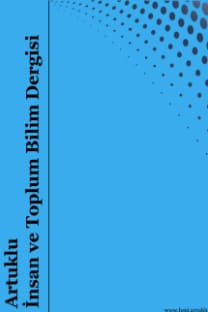Kuzeydoğu Bangladeş'in Tropikal Yağmur Ormanlarında Yaşayan Avcı-Toplayıcı Munda Topluluğu Üzerine EtnoArkeolojik Notlar
Avcı-toplayıcı gruplar bu evrendeki en eski ve muhtemelen en başarılı insan uyumunu örneklendirmektedir. 12.000 yıl öncesine kadar, toprak ekim sistemine geçilinceye kadar, tüm insanlık avcı-toplayıcı olarak yaşamıştır. Dolayısıyla günümüz avcı-toplayıcı toplumları üzerine yapılan araştırmalar insan yaşamının şehirleşmeden önceki hayatına dair temel sorulara ışık tutabilir. Dahası, insanları doğal yaşam alanlarından çeviren süreçler hakkında da bilgi içerebilir. Palkichara köyündeki Munda topluluğu, sosyoekonomik olarak kontrol edilen yerel çay üretimine rağmen atalarının takip ettiği yaşam tarzı açısından benzersiz olarak görülmektedir. Avcılık ve toplayıcılık, aile, toplum ve kültürel hayatlarına yansıması olan iki temel yaşam kaynağıdır. Dolayısıyla, doğayla tam bir ilişki içinde ve dünyanın kalan kısmıyla bağı zayıf olan Palkichara köyündeki Munda topluluğu tarih öncesi avcı-toplayıcı topluluklar hakkında bazı görüntüler sunabilir. Bu çalışma, Palkichara köyündeki Munda kabilesi insanlarının ilkel yaşamı neden ve nasıl devam ettirdiği gibi soruları ve geleneksel avcı-toplayıcı yöntem ve tekniklerin çeşitli boyutlarını incelemeyi amaçlamaktadır.
Ethno-archaeological Notes on Hunter-gatherer Munda People in Tropical Rainforests of North-eastern Bangladesh
The hunter-gatherer groups represent the oldest and perhaps most successful human adaptation on this planet. Until 12,000 years ago, before the starting of cultivation system in the Fertile Crescent, virtually all humanity lived as hunters and gatherers. Therefore, investigations on present day hunter-gatherer societies may hold the key to some of the central questions about humans’life in nature before urbanization. Moreover, they may hold information about the processes which shifted people from their natural habitat. The Munda people of Palkichara village are still observed to be unique with their ancestral way of life despite of being socio-economically controlled by the local tea estate. Hunting and gathering are the two main ways of subsistence which reflect in their every aspects of family, social and cultural practices. Therefore, being completely attached with nature and almost untouched by rest of the world, the Munda people of Palkichara village may provide some pictures of prehistoric hunter gatherer societies. This study is aimed to focus on some significant aspects of the traditional hunting-gathering methods and techniques as well as the questions on how and why the primitive way of life is still active in Munda tribal people of Palkichara village.
Keywords:
Munda, Palkichara Hunter gatherer, Prehistoric subsistence,
___
- Agrawal, S., Srivastava, S. K., Borkar, M., & Chaudhuri, T. K. (2008). Genetic affinities of north and northeastern populations of India: Inference from HLA-based study”, Tissue Antigens, 72, 120 – 130.
- Blench, R. (2008). Re-evaluating the linguistic prehistory of South Asia. In Osada, T. & Uesugi, A. (Eds.) Occasional Paper 3: Linguistics, Archaeology and the human past (p. 159-178). Kyoto: Indus Project, Research Institute for Humanity and Nature.
- Das, S. (2014). Changing cultural profile of a tea garden community: A case study of Mundas in Tripura. International Journal of Innovative Research and Studies, 3, 338-346.
- Das, P., & Singh, P. K. (2014). The Munda and their Lac culture: A case study of Gulllu area of Murhu block of Khunti district, Asian Mirror- International Journal of Research, 1, 1-22.
- Gadgil, M., Joshi, N., Manoharan, S., Patil, S., & Prasad, U. V. S. (1998). Peopling of India. In D. Balasubramanian & N. Rao (Eds.). The Indian human heritage (p. 100-129). Hyderabad, India: Universities Press.
- Gupta, S. D. (2009). Accessing nature: Agrarian change, forest laws and their impact on an adivasi economy in colonial India. Conservation and Society, 7, 227238.
- Lee, R. B., & Daly, R. (1999). The Cambridge encyclopedia of hunters and gatherers. Cambridge University Press.
- Majumder, P. P. (2001). Ethnic populations of India as seen from an evolutionary perspective. Journal of Bioscience, 26, 533–545.
- Osada, T. (1997). An introduction to comparative Munda linguistics. Nihon Kenkyû, 16, 259-288.
- Osada, T. (1996). Ethnographical notes on Munda (2): Cultivator, Hunter, Artisan. Nihon Kenkyû, 14, 282256.
- Pattanayak, D. P. (1998). The language heritage of India. In D. Balasubramanian & N. Rao (Eds.) The Indian human heritage (p. 95-99). Hyderabad, India: Universities Press.
- Prakritik Shampad (in Bangla) (2016). Retrieved from http://www.moulvibazar.gov.bd/node/436698
- Riccio, M. E., Nunes, J. M., Rahal, M., Kervaire, B., Tiercy, J., & Mazas, A. S. (2011). The Austroasiatic Munda population from India and its enigmatic origin: A HLA diversity study. Human Biology, 83, 405–435.
- Roy, J. S., & Ahsan, S. M. K. (2000). A study of prehistoric tools on fossil wood from Chaklapunji, Habiganj. Pratnatattva, 6, 21-32.
- Roychoudhury, S., Roy, S., Basu, A., Banerjee, R., Vishwanathan, H., Rani, M. V. U., Sil, S. K., Mitra, M., & Majumder, P. P. (2001). Genomic structures and population histories of linguistically distinct tribal groups of India. Human Genetics, 109, 339 – 350.
- Sharmeen, S. (2013). Politics of development and articulation of indigenous identity: the formation of Munda identity in Barind, Bangladesh. International Journal of Asia Pacific Studies, 9, 141-160.
- Srivastava, M. (2007). The sacred complex of Munda tribe. Anthropologist, 9, 327-330.
- Winters, C. (2011). Munda speakers are the oldest population in India. The Internet Journal of Biological Anthropology, 4. Retrieved from http://ispub.com/IJBA/4/2/5591
- Yayın Aralığı: Yılda 2 Sayı
- Başlangıç: 2016
- Yayıncı: Mardin Artuklu Üniversitesi
Sayıdaki Diğer Makaleler
19. Yüzyıl Batılı Seyyahlarının Antik Dara (Anastasiopolis) Şehri ile İlgili Gözlemleri
Jean-Paul Sartre’ın The Flies Eserinin Yapısalcı bir Analizi
Ebu’l Fazl Mehmed Efendi (Defterdar Mehmed Efendi)
EPOSTL’nin Türkiye’de Uygulanma Potansiyelinin İncelenmesi
